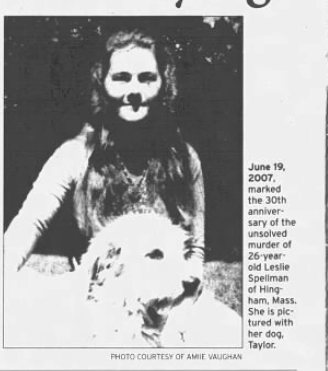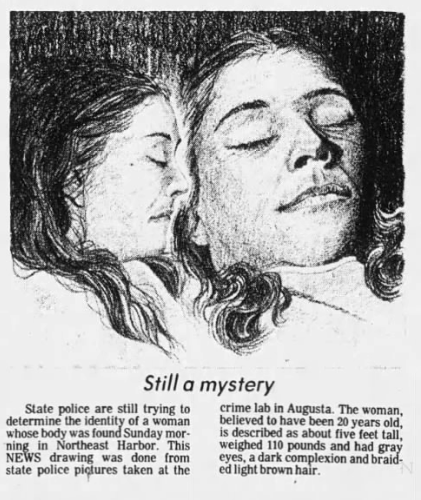Acadia National Park may exist on an island but in the late 1970’s a human predator showed up there and started hunting. The identity of the killer has remained unknown for more than four decades and the mystery as to who killed Leslie Spellman is still waiting to be uncovered.

Leslie Spellman

redtree

Map

Jane Doe Sketch

James Hicks Mug shot
Episode Source Material
- The Boston Globe: Slain woman is traced to Boston store, by John F. Cullen.
- Death in Acadia and Other Misadventures in Maine’s National Park. Down East Books, by Randi Minetor
- The Bangor Daily News: Woman found slain.
- The Bangor Daily News: Police release details about slaying victim, by Maureen Williams.
- The Bangor Daily News: Identity sought.
- The Boston Globe: Hingham woman’s slaying a puzzle, by Gloria Negri.
- The Bangor Daily News: Family identifies slain woman, by Christopher Spruce.
- The Bangor Daily News: Slaying probe shifts to Vermont, by Christopher Spruce.
- The Times Argus: Woman Found Dead In Maine Last Seen Alive In Barre.
- The Brattleboro Reformer: Hiker Found Slain After Leaving Vermont, by UPI.
- Bennington Banner: Final hours of victim a mystery, by UPI.
- The Boston Globe: Conn. Killings point to one in Maine, by John F. Cullen.
- The Bangor Daily News: Kill-link theory arouses lawyer, by UPI.
- Naugatuck Daily News: Williams Says Acquin Not In Maine In June, by UPI.
- Nashua Telegraph: Unsolved murder cases reopened, by Associated Press.
- The Bangor Daily News: State seeks ‘cold case’ investigators, by Renee Ordway.
- The Bangor Daily News: Cold case: Clues sought in 1977 slaying, by Toni-Lynn Robbins.
- Fox 22 Bangor: Asticou Azalea Garden 1977 murder still unsolved, by Nit-Noi Ricker.
- Green Mountain Ridge – The Long Trail
- James R. Hicks via Murderpedia.org
- James R. Hicks Bureau of Prisons Profile
- Hartford Courtant: 1977 Mass Murder in Prospect Claimed Woman, 8 Children, by Julie Stagis.
- Acadia National Park Information National Park Service
- Radford Psychology Study
